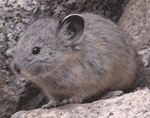 Dr Kumi Kato, a lecturer in the school of languages and comparative cultural studies at the University of Queensland, dispassionately looks at the claims of the Japanese whalers to hunting rights based on cultural identity.
Dr Kumi Kato, a lecturer in the school of languages and comparative cultural studies at the University of Queensland, dispassionately looks at the claims of the Japanese whalers to hunting rights based on cultural identity.Articulately arguing for a sustainable way forward that recognises the claims of some Japanese to a whaling tradition, while exploding the 'research' myth, it bears republishing in full:
The whale hunt that knows no tradition
December 24, 2007
At the southern end of the Japanese island of Honshu is a small fishing village where community-based coastal whaling took place from the late 1600s to the early 1900s. Today, more than 100 years since the whaling ended there, the island is scattered with monuments dedicated to the spirits of whales caught in the region. Associated rituals and festivities continue, including daily prayers for the spirits of whales and dolphins by two elderly nuns.
It is true that whale meat, or more generally cetacean meat, had been - and in some regions still is - part of the Japanese diet. In some regions it is valued as celebratory food as it was closely linked with community unity based on collaborative labour, sharing of food, celebration and thanksgiving rituals, in which remorse was also expressed.
It is also true that whale meat was introduced as part of General MacArthur's regime to increase the protein intake of the starving nation after World War II. Older generations therefore associate whale with postwar food shortages. The meat was also used for school lunches, a practice reintroduced in recent years in some prefectures.
But small-scale coastal whaling largely diminished due to the transition to large-scale industrial whaling and the 1986 moratorium and subsequent ban on minke hunts for the coastal communities. Small-scale hunts for dolphins continue for a range of purposes, including sales to aquariums.
The claim by the Japanese Government that whale meat is part of Japanese culture is true in that it existed in this small-scale, community-based coastal whaling similar to the hunts of indigenous groups such as the Makah and Inuit, but this is, in my opinion, clearly separate from the large-scale industrial whaling conducted on the high seas.
If the Government is seriously committed to the maintenance of cultural tradition, the priority would be on the sustainable livelihood practices of coastal community fisheries, which may include a very limited number of whale hunts. It is human arrogance to assume harvest of any natural resource as a right but, if an inherent cultural right is to be granted to anyone, it would be the coastal communities.
This situation is comparable with mass clear-fell logging versus small-scale selected logging by specialised timber workers sustained by their knowledge, ethics and spirituality. A "wood culture" exists in the latter, the small-scale loggers who, with their knowledge, can make a positive contribution to today's environmental thinking. This would be the case with small-scale whalers and hunters. They have valuable knowledge that can inform us about sustainability.
Another argument Japan makes in favour of whaling is that it is for scientific research. Simply, if research destroys a species it should not be carried out, and if research is necessary to improve the ecological wellbeing of a species every effort must be made to minimise the impact of the research.
This is the fundamental consideration in any research. If the research was genuinely concerned with conservation of the humpback it would not be abandoned for a better bilateral relationship, or the hunt would not even have been considered in the first place. Humans are in no position to "cull" wild species, except in cases in which our past mistakes have skewed the natural balance and thus need to be corrected, such as with the cane toad.
Another issue requires urgent consideration: the reported high level of mercury in cetaceans like whales and dolphins. Two councillors from a coastal village, a birthplace of traditional whaling in Japan, recently spoke out about the dangerous level of mercury found in the locally harvested dolphin meat, some of which may have been used for school lunches. Reports and warnings have been issued about consumption of fish and cetacean products by the Ministry of the Health, Labour and Welfare, and the Japan Consumer Co-operative Union. This obviously has serious implications for consumers, as well as the wellbeing of the animals, which would benefit from urgent research.
The extent of the impact of humans on the planet is undeniable. This must be compensated for in every way possible, and we must keep changing unsustainable practices. Clearly it is time to move on.
Stop Japan's Whale Hunt: Sign the Daily Telegraph Petition
 Global Warning Climate Change Energy
Global Warning Climate Change Energy









